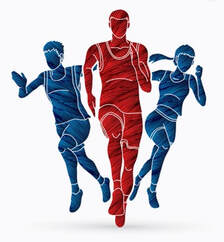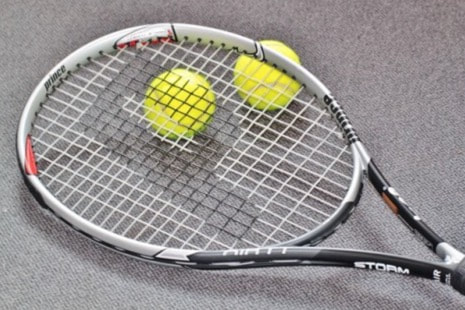 Let’s paint a picture. Saturday is the day. You have been training for this event for months. You are passionate about your health and habits contributing to a personal goal. You have realized gains in strength, surpassed personal best records and have the edge going into the last week prior to your event. Someone recommends that you receive massage to help you prevent injury and control your mental game as you make final preparations. You make an appointment for a massage for the Friday night before the event. Your therapist employs, what they call, deep tissue massage in order to break up adhesions. Your therapist administers general or full body massage as a means of stress management. They even stretch every muscle in your body at the end of the session. You get off of the table feeling better than you have in quite some time. You drink the prescribed water to “flush out toxins that were squeezed out by the massage” (BS). Pain that you thought you could never rise above has left your body. You drive home with a drunken smile doing 40mph in a 55mph zone. You go to bed early. Saturday. Your alarm goes off. You feel like you have been hit by a garbage truck. Joints are hurting. You have DOMS, delayed onset muscle soreness. Movement is bothersome if not painful. Coffee doesn’t do its normal trick. You want to crawl back in bed. You are the victim of a train wreck a mere 100 feet from its final destination. For the moment, all gains are lost. You need two days of recovery. Massage as an integral part of training can factor in that competitive edge many are looking for. Also true, massage can inhibit the same desired results. Yes, goal oriented and outcome-based massage therapy sessions impact an athlete’s ability to perform better and recover quicker. But, the one flippant session immediately before or after an event really does not weigh in when it comes to desired results. In fact, without certain key elements adhered to, massage can cause gains in training to be lost come game time or create a reality in which such gains are not as possible to begin with. Desired results, optimal and measurable results, warrant that massage therapy be responsible if it is to be an integral part of training. Responsible massage therapy
Let’s consider another, actual, scenario. One of my athletes comes in for his weekly sessions. He’s a sprinter. His sessions are timed at the end of practice at the end of the week. Before getting on the table he announces that instead of coming out of practice, he will be going to practice after his massage session. That changes everything about the session. Instead of a one hour, general or full body session targeting tight hamstrings followed by stretches with the goal of lengthening stride, we change to a 30-minute session that only hits large muscles groups. The length of the session is not the only thing changed. Pace, rhythm, drag, duration, depth, technique and the outcome itself are also changed. Rather than working towards flexibility and range of motion, we target the nervous system in order to stimulate. Rather than inhibiting muscle tightness in one group of muscles, which can be a workout in and of itself, we activate large muscle groups. Rather than inducing recovery, we prepare both the muscular and nervous system for action. Instead of going into practice with a parasympathetic nervous system reaction, calm and relaxed, which would have been the case, he went into practice with his nervous system in a sympathetic state, prepared for action. We could have cancelled the appointment. We did not because of his current health and vitality, his ability to respond to the stress of a massage session. If he had been a weekend warrior I would have just rescheduled the session for afterwards to induce recovery. You should be thinking:
1. Now I’m confused. Rightly so. Misinformed or ill-informed professionals working outside of their professional scope of practice will do more damage than good especially when it comes to educating the general public as to the benefits of massage for athletes. Even reading articles online will serve to add to the confusion. So, be careful that WHAT you read is supported properly. Ask your therapist for information supported by clinical trial studies and peer reviewed journals. Here is a good place to start, the massage profession’s only open-source, peer-reviewed academic journal, the International Journal of Therapeutic Massage & Bodywork. As an example: HERE. Another from AMTA describes the benefits of massage for headaches: HERE. There is evidence supporting the benefits of massage as part of an athletes training to include injury prevention and injury recovery. Look at the references listed in Massage For Those Who Exercise. See that they ARE listed is the point. There is a difference in a topically oriented professional opinion and a study that presents objective findings followed by implications for further study. 2. Okay. Why should I risk it? Why should I bother? “Individuals who participate in exercise and athletic programs who seek enhanced performance, improved conditioning, faster recovery, injury prevention, and assistance in maintaining peek fitness can benefit from massage therapy given by professional massage therapists working within their scope of practice.” That’s why. Above and Below is taken from the last article mentioned and the references are also found in same article. Again: Here. Research has shown that in relation to exercise and athletic participation massage can:
3. What type of massage do I need? What can I expect as far as therapy goals and modalities used in a session? A Licensed Massage Therapist that has training working with athletes will take a lot of information into consideration in designing a treatment plan for you. The two of you will agree upon all aspects of proposed treatment plan. It’s called an informed consent. The type of massage and treatment goals established as well as the modalities used in a session will be informed by data collected at the onset. Aside from a health intake form, your LMT will ask the following questions:
Your LMT will conduct various visual, palpable and functional assessments in order to determine if it is safe to work on you or whether you need to see a different professional. These assessments will also inform your therapist as to which tissue needs attention and which type of therapy. Types of massage, modalities, will match the goals that you establish as they produce physiologic outcomes conducive to the same. In general terms, and depending on your current health and needs, your treatment plan will indicate whether muscles or nervous system is to be targeted or a combination of both. Yet, even within those parameters, a decision to inhibit or stimulate is to be made depending upon your recent and planned activity level. (If you just ran a Half Marathon you don’t want to wait a week to receive work. If you’re running a Half tomorrow you don’t want to receive any work. If it is 30 minutes to start time you can receive a 10 min warm up as long as it is stimulating and not taxing. If you just ran a 5k and your idea of hydration is Miller Lite …No) There is a lot to consider. But a clear treatment plan should be encouraging as you can see how it fits into the grand scheme, your fitness activity and goals. So, a typical treatment plan for my sprinter is as follows: Weekly
Pre event warm up
Within 2 hours post event IF last event of the day
I do not list modalities on a menu board for selection. “I think I’ll try some myofascial release today followed by Active Isolated Stretching and finish with an Essentric Pin and Stretch”. No. It starts with a goal. The therapist chooses which tool to remove from his/her tool belt in order to match physiologic outcomes with a goal. The therapist also only carries tools in his/her tool belt that they are comfortable using. So, focus on the goal. Choose a seasoned and knowledgeable therapist, not a modality (fad technique) As far as goals, you most likely already have one in mind being that you’re considering such therapy. It can be as simple as:
Or just pick from the list of benefits noted earlier, 4. When is the optimal time for receiving massage therapy as a structural and planned component of training? As you can see by now, timing is important. Your recent and future activity dictates when.
5. Which therapist do I need? Well, if you live near me… www.bobbylewislmt.com Outside of NW Georgia? Check the websites for AMTA and ABMP for a listing of therapist in your area. They should have listed specialties per therapist as well. Sports Massage. Neuromuscular Therapy. Orthopedic Massage. Your local runners club or college athletic department may have a referral. Chiropractors and LMTs often work together. If I were in the market for a therapist I would ask fellow athletes. You want a seasoned therapist that has a following. May be harder to get on the books so once you are able, schedule the whole year out in advance and ask for a discount. If the therapist tells you to drink water to flush out the lactic acid and other toxins that they broke loose during the massage… pay your bill. don’t tip. walk away. Keep looking.
0 Comments
Your comment will be posted after it is approved.
Leave a Reply. |
CategoriesAll Carpal Tunnel Chronic Cough Golf Low Back Pain Mid Back Pain Olympic Athlete Post Surgery Shoulder Thoughts Archives
September 2019
Bobby LewisNeuromuscular Therapist |

 RSS Feed
RSS Feed

